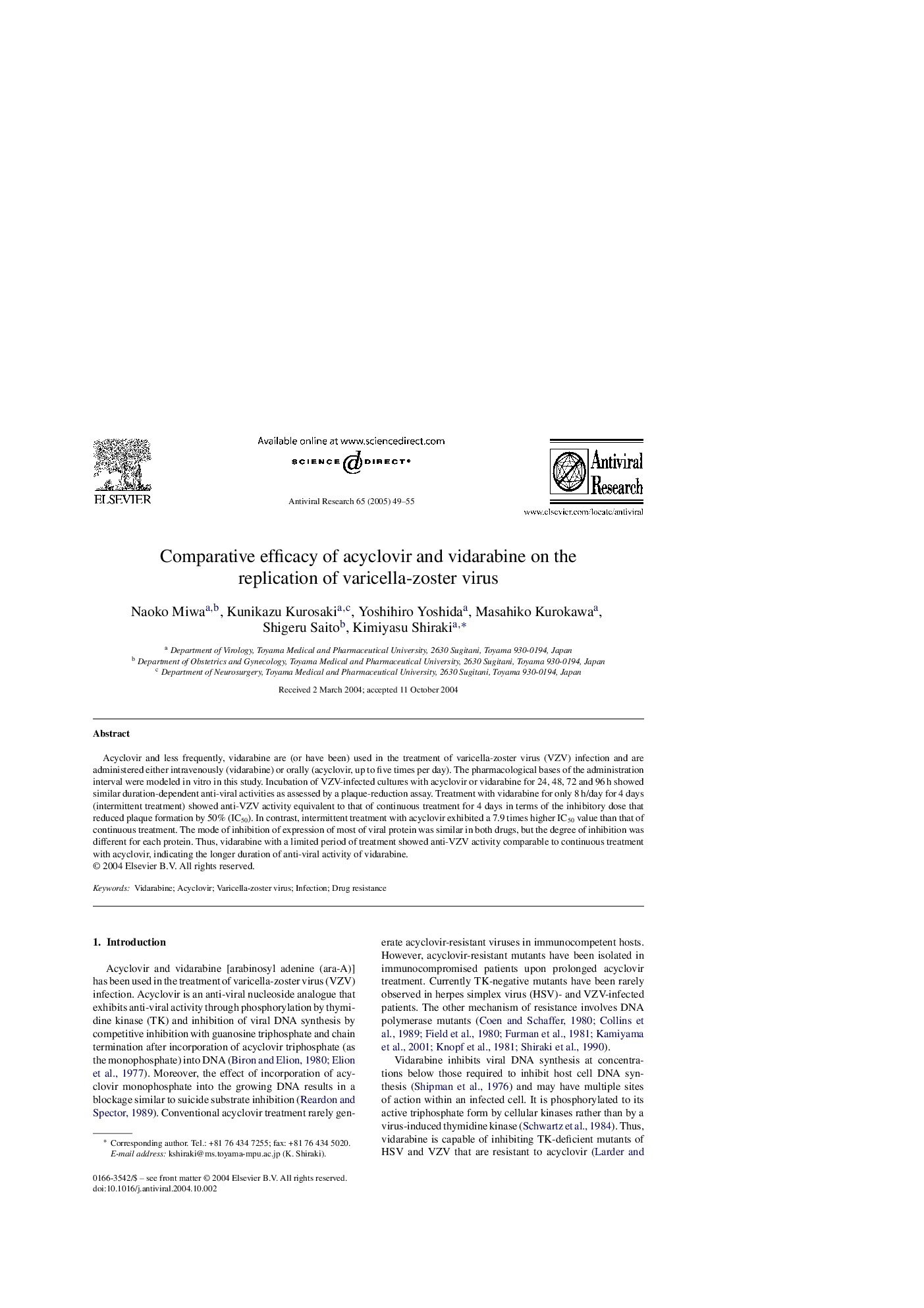| Article ID | Journal | Published Year | Pages | File Type |
|---|---|---|---|---|
| 9001019 | Antiviral Research | 2005 | 7 Pages |
Abstract
Acyclovir and less frequently, vidarabine are (or have been) used in the treatment of varicella-zoster virus (VZV) infection and are administered either intravenously (vidarabine) or orally (acyclovir, up to five times per day). The pharmacological bases of the administration interval were modeled in vitro in this study. Incubation of VZV-infected cultures with acyclovir or vidarabine for 24, 48, 72 and 96Â h showed similar duration-dependent anti-viral activities as assessed by a plaque-reduction assay. Treatment with vidarabine for only 8Â h/day for 4 days (intermittent treatment) showed anti-VZV activity equivalent to that of continuous treatment for 4 days in terms of the inhibitory dose that reduced plaque formation by 50% (IC50). In contrast, intermittent treatment with acyclovir exhibited a 7.9 times higher IC50 value than that of continuous treatment. The mode of inhibition of expression of most of viral protein was similar in both drugs, but the degree of inhibition was different for each protein. Thus, vidarabine with a limited period of treatment showed anti-VZV activity comparable to continuous treatment with acyclovir, indicating the longer duration of anti-viral activity of vidarabine.
Related Topics
Life Sciences
Immunology and Microbiology
Virology
Authors
Naoko Miwa, Kunikazu Kurosaki, Yoshihiro Yoshida, Masahiko Kurokawa, Shigeru Saito, Kimiyasu Shiraki,
